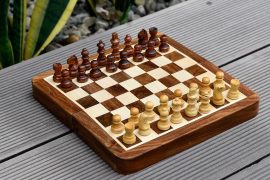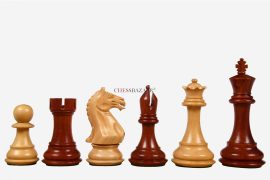French craftsmen reigned supreme in the field of art from centuries. French chesspieces are one of its examples. They are completely individual, well-balanced, perfectly carved and each piece is perfectly related and matched in dimensions and character with other pieces. They are outstanding for their simplicity and beauty.
Unlike other craftsmen, French turners and carvers settled in Paris or Dieppe but they scattered throughout the country in the form of small workshops. These small workshops made chess sets on commercial scales.
How were French chesspieces made?
French chesspieces were made up African ivory, kiln-dried bone and many types of wood. The chesspieces were differ in size but all are basically similar. The bishops are equiped with felt or leather, silk-fringed hate while the knights are portrayed as horses. The pawn stems and and bases are red or pale pink. All the major pieces are finished in polychrome with silver trim.
During long and arduous journeys french aristocrats often played chess to while away the time. Cushion chessboards were used with spiked chesspieces. The cushion was embroidered with squares to form a chessboard and chesspieces terminated in tapering spikes.
In the early 19th century, Napoleon was featured as Chess king while Josephine as Queen. The knights were French dragoons and Massena was featured as Bishop. Napolean’s old guard was used as Pawn.
Craftsmen throughout the ages have fashioned chess pieces from every imaginable substance and the search for new materials continues to this day with the emphasis on stainless steel and plastics.


